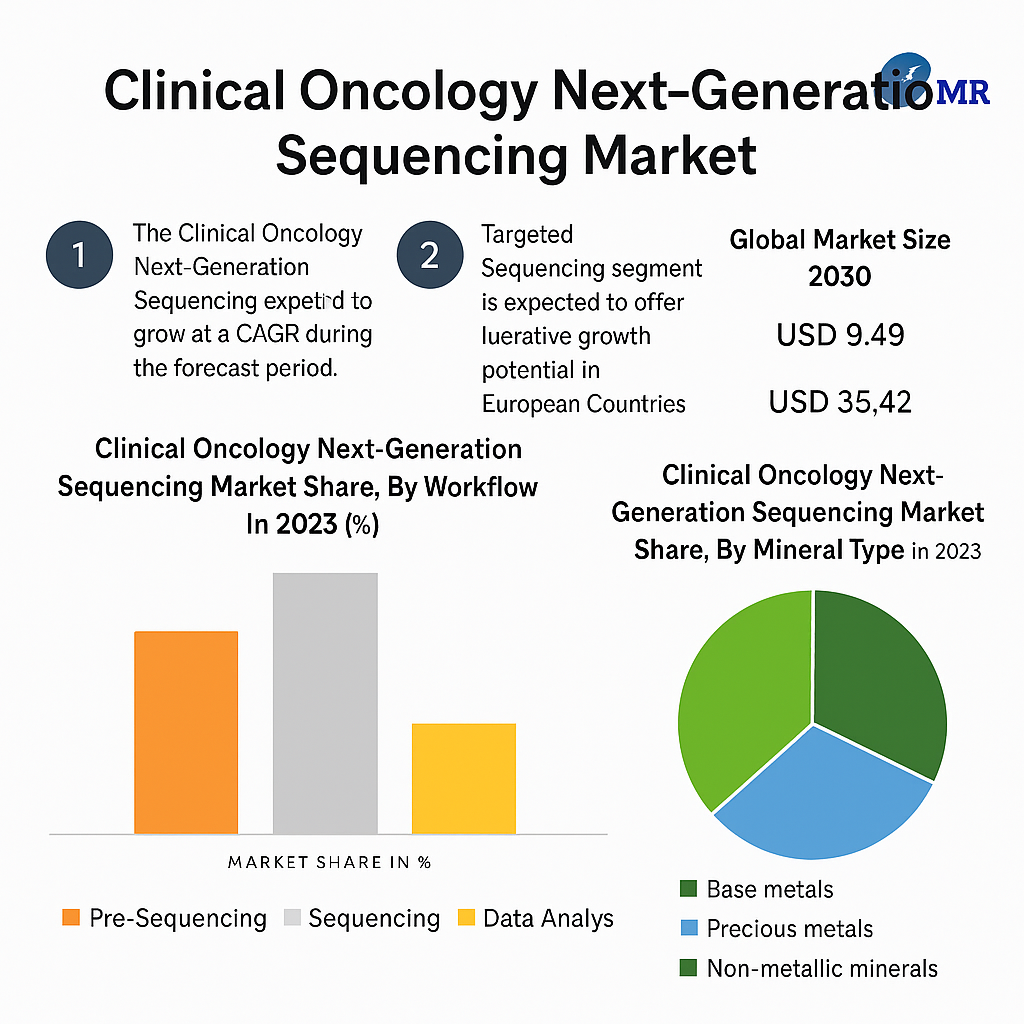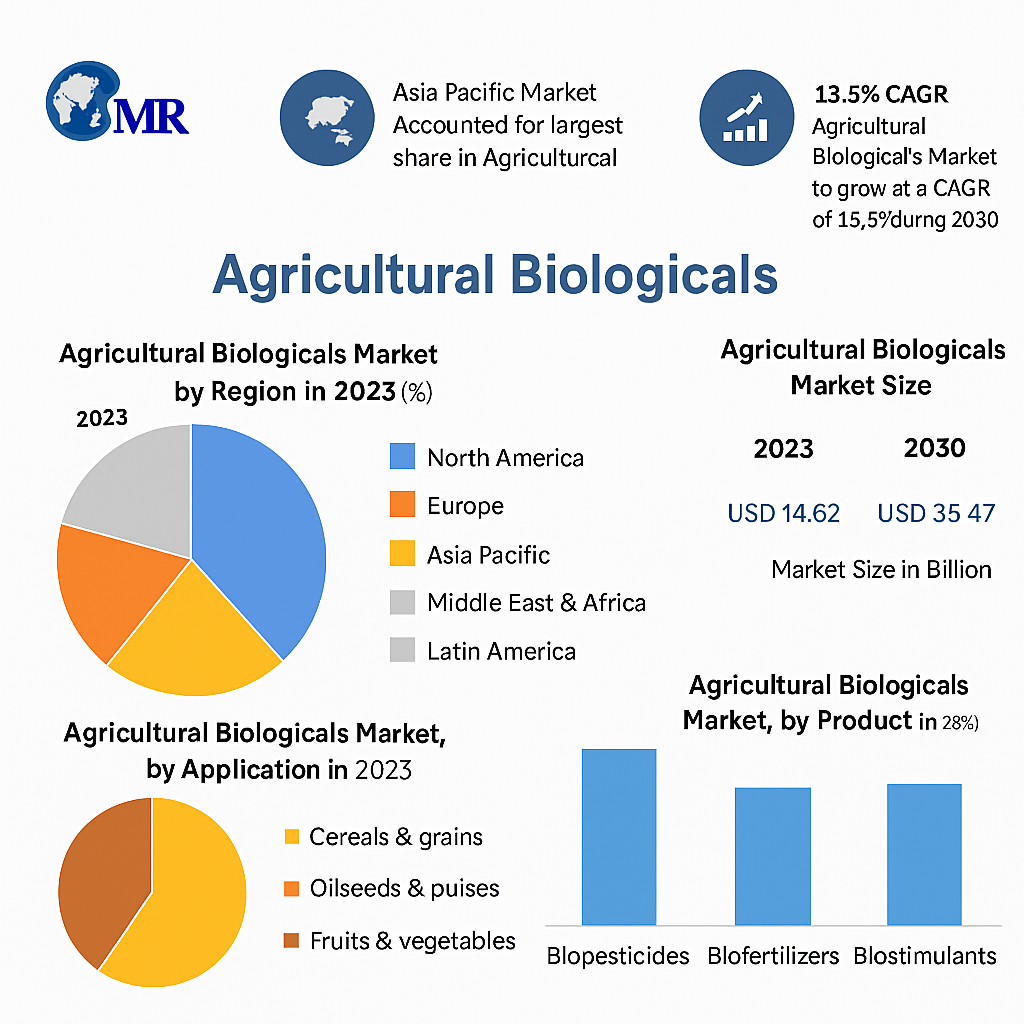The global Clinical Oncology Next-Generation Sequencing (NGS) market size is poised for significant growth, projected to expand from USD 9.49 billion in 2023 to USD 35.42 billion by 2030, registering a robust CAGR of 20.7% during the forecast period.
Market Estimation & Definition
Clinical Oncology NGS refers to high-throughput genomic analysis techniques that identify tumor DNA mutations, guiding personalized cancer treatments through simultaneous examination of multiple genes. This approach enables comprehensive insights into tumor biology, facilitating targeted therapies and improving patient outcomes.
Market Growth Drivers & Opportunities
Several factors are propelling the growth of the Clinical Oncology NGS market:
-
Technological Advancements: Continuous improvements in sequencing technologies have enhanced accuracy, speed, and cost-effectiveness, making NGS more accessible for clinical applications.
-
Rising Cancer Prevalence: The increasing global incidence of cancer has heightened the demand for precise diagnostic tools and personalized treatment options.
-
Personalized Medicine Demand: There is a growing emphasis on tailored therapies based on individual genetic profiles, which NGS facilitates by providing detailed genomic information.
-
Regulatory Support: Government initiatives and funding for cancer genomics research have bolstered the adoption of NGS in clinical settings.
-
Segmentation Analysis
The Clinical Oncology NGS market is segmented based on technology, workflow, application, and end-user:
-
By Technology:
-
Whole Genome Sequencing (WGS): Provides a comprehensive view of the entire genome, aiding in the identification of novel mutations.
-
Whole Exome Sequencing (WES): Focuses on the protein-coding regions of the genome, offering a cost-effective alternative to WGS.
-
Targeted Sequencing: Allows for the analysis of specific genomic regions, enhancing sensitivity and reducing data complexity.
-
By Workflow:
-
Pre-Sequencing: Involves sample preparation and library construction.
-
Sequencing: The actual process of determining the nucleotide sequence.
-
Data Analysis: Interpretation of sequencing data to identify genetic variations.
-
By Application:
-
Screening: Early detection of cancer-related genetic mutations.
-
Companion Diagnostics: Identifying patients likely to benefit from specific therapies.
-
Other Diagnostics: Includes prognosis and monitoring of treatment response.
-
-
-
-
Country-Level Analysis: USA and Germany
USA: The United States leads the Clinical Oncology NGS market, attributed to advanced healthcare infrastructure, significant investments in genomics research, and the presence of key market players. The U.S. market was valued at USD 500.45 million in 2023 and is projected to reach USD 2,078.04 million by 2033, growing at a CAGR of 15.3%.
Germany: Germany represents a significant market in Europe, driven by strong research and development activities, government support for precision medicine, and high adoption rates of advanced diagnostic technologies. The country’s focus on integrating NGS into clinical practice has contributed to market growth.
Competitive Analysis
The Clinical Oncology NGS market is characterized by the presence of several key players focusing on strategic collaborations, product development, and mergers and acquisitions to strengthen their market position. Notable companies include:
-
Illumina Inc.
-
Thermo Fisher Scientific
-
Hoffmann-La Roche Ltd.
-
Agilent Technologies
-
Myriad Genetics
-
PerkinElmer
-
Caris Life Sciences
-
Partek, Inc.
-
Eurofins Scientific
-
Qiagen N.V.
-
Foundation Medicine
-
Pacific Biosciences
-
Oxford Nanopore Technologies Ltd.
-
Paradigm Diagnostics
-
Beijing Genomics Institute (BGI)
-
Takara Bio, Inc.
-
Creative-Biolabs
These companies are investing in research and development to enhance sequencing platforms, improve data analysis algorithms, and expand applications in cancer diagnostics, prognostics, and therapeutics.
To view full Report :
The global Clinical Oncology Next-Generation Sequencing market is set to experience substantial growth, driven by technological advancements, increasing cancer prevalence, and the rising demand for personalized medicine. With significant investments in research and development, supportive regulatory frameworks, and a focus on precision oncology, the market is poised to transform cancer diagnosis and treatment, ultimately improving patient outcomes worldwide.



